The power of metaphorical thinking
 A picture can speak a thousand words and convey a complex concept that text on its own can’t quite manage. And the act of crafting them is a powerful way to synthesize understanding.
A picture can speak a thousand words and convey a complex concept that text on its own can’t quite manage. And the act of crafting them is a powerful way to synthesize understanding.
How would you create a visual whose goal is to capture the complexities of personalized learning?
I was reminded of this truth when I first read Trevor McKenzie’s MindShift article How to Ease Students Into Independent Inquiry Projects. As educators grapple with the move toward more student-centered practices and begin introducing student-driven interest projects, they often struggle with their role in this work. McKenzie’s simple illustration of students learning how to swim effectively demonstrates the gradual release of control that can happen to support inquiry work.
But, don’t take my word for it. Marzano, in his article The Art and Science of Teaching / Representing Knowledge Nonlinguistically, points to achievement gains when students are tasked with generating representations of new learning that don’t rely solely on language.
Students at play
My colleagues and I find plenty of inspiration in Dan Ryder and Amy Burvall’s Intention: Critical Creativity in the Classroom. It’s full of short activities that promote deeper learning through metaphorical and visual thinking that are super fun, reflective, and easy to implement in the classroom. Check out these three examples from the their Catalog of Creativity.
With a cohort of Vermont educators, I took on the challenge to synthesize our current thinking through imagery. Here’s the task we undertook:
- Read this brief article by Marzano, which describes why and how to have learners create visuals that represent key ideas.
- Draft a visual / visuals that show / represent your answers to three questions:
- What is personalization?
- How is it similar to / different from differentiation?
- What are the design features of learning settings that get personalization right?
- Draft a text (no more than 150 words) that explains how the visual represents your distilled answers to our three questions.
The assignment resulted in divergent and complex images
Here are a few examples:
Stephanie Zuccarello from Peoples Academy Middle School:
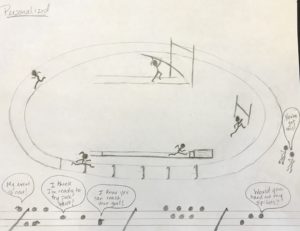
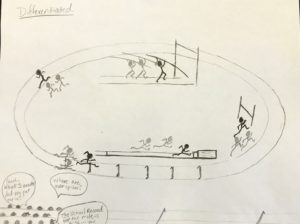
“As part of the D Track Team, each athlete is given a uniform, share spikes, are assigned 3 events each, and are work to break the school record. They are given specific workouts to master the skills in their events and practice as a group. At meets, they sit as a team, wait for their event, and listen to the coach for direction.
As a member of the Peoples Track Team, each athlete rotates through each event to familiarize themselves then choose an event in which to participate. The athletes set personal goals, are given shoes to fit their gait, and help determine their practice to best meet their needs, weekly. Students are encouraging and help coach each other during meets. When an athlete feels like he/she have the resources to be ready, he/she tries a new event.”
Sam Nelson at Shelburne Community School:
“This is a draft of my visual. In fact, here’s a quick look at the evolution of this project:
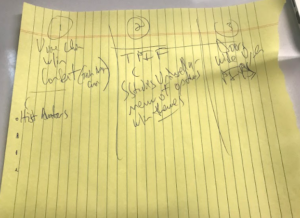
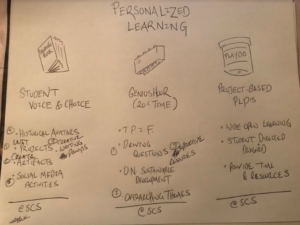
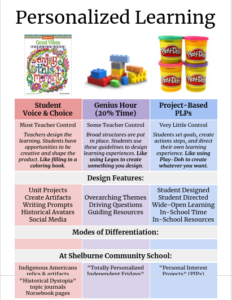
I really like the overall flow of this visual and it captures my thesis of levels of personalized learning.”
Robyn Alvin at Stowe Middle School responded by taking the image idea to the next level: a video.
The images produced by these educators pushed my understanding of the complex concept of personalization as it is implemented in classrooms, and helped my learners grapple with synthesizing their own understandings.

